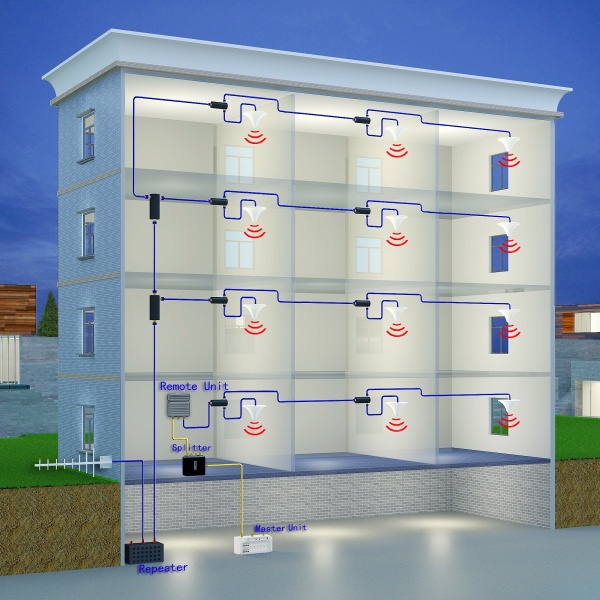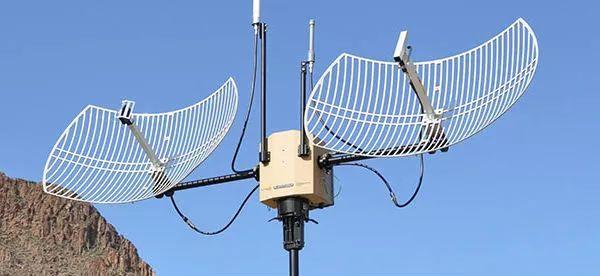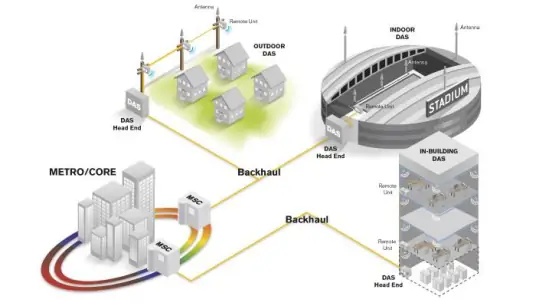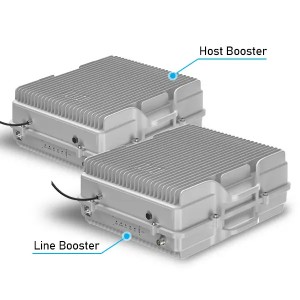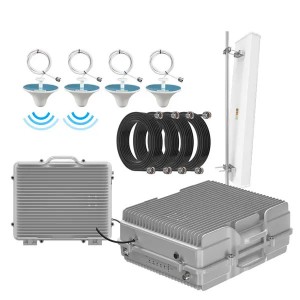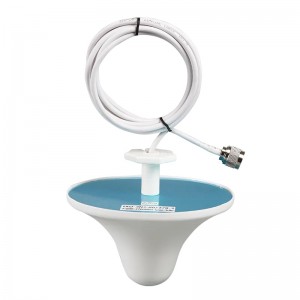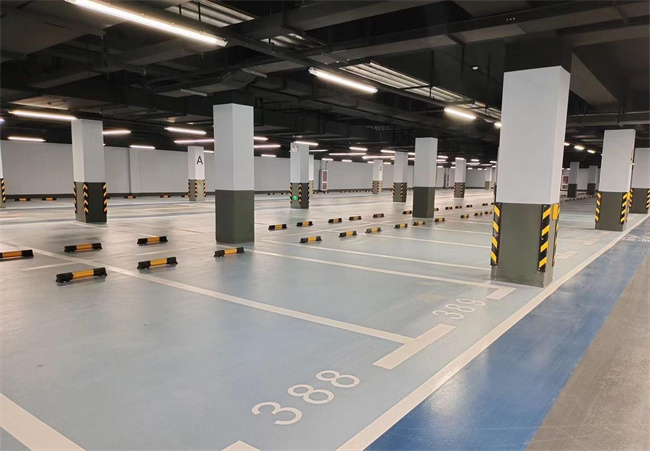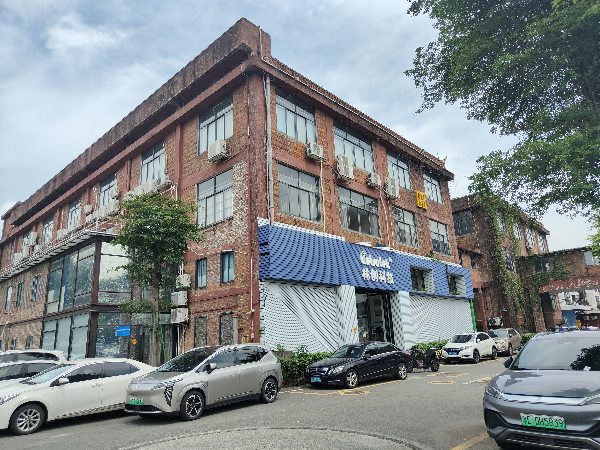“Active DAS” refers to Active Distributed Antenna System. This technology enhances wireless signal coverage and network capacity. Here are some key points about Active DAS:
Distributed Antenna System (DAS): DAS improves mobile communication signal coverage and quality by deploying multiple antenna nodes inside buildings or areas. It addresses coverage gaps in large buildings, stadiums, subway tunnels, etc.For further details on Distributed Antenna Systems (DAS), please click here.
Active DAS for Commercial Building
1.Difference between Active and Passive DAS:
Active DAS: Uses active amplifiers to boost signals, providing greater gain and coverage range during signal transmission. These systems offer higher flexibility and adaptability, effectively covering large or complex building structures.
Passive DAS: Does not use amplifiers; signal transmission relies on passives such as feeders, couplers, and splitters. Passive DAS is suitable for smaller to medium-sized coverage needs, like office buildings or small commercial areas.
Active Distributed Antenna System (DAS) enhances wireless signal coverage and capacity by using active electronic components to amplify and distribute signals throughout a building or area. Here’s how it works:
Passive DAS
Active Distributed Antenna System (DAS) enhances wireless signal coverage and capacity by using active electronic components to amplify and distribute signals throughout a building or area. Here’s how it works:
Active Distributed Antenna System (DAS)
Components
1. Head-End Unit:
- Base Station Interface: Connects to the wireless service provider’s base station.
- Signal Conversion: Converts the RF signal from the base station into an optical signal for transmission over fiber optic cables.
Head-End and Remote Unit
2. Fiber Optic Cables:
- Transmit the optical signal from the head-end unit to remote units located throughout the coverage area.
Fiber Optic Repeater (DAS)
3. Remote Units:
- Optical to RF Conversion: Convert the optical signal back into an RF signal.
- Fiber Optic Repeater: Boost the RF signal strength for coverage.
- Antennas: Distribute the amplified RF signal to the end-users.
4. Antennas:
- Placed strategically throughout the building or area to ensure uniform signal distribution.
Working Process
1. Signal Reception:
- The head-end unit receives the RF signal from the service provider’s base station.
2. Signal Conversion and Transmission:
- The RF signal is converted into an optical signal and transmitted via fiber optic cables to remote units.
3. Signal Amplification and Distribution:
- Remote units convert the optical signal back into an RF signal, amplify it, and distribute it through connected antennas.
4. User Connectivity:
- Users’ devices connect to the distributed antennas, receiving a strong and clear signal.
Benefits
- Improved Coverage: Provides consistent and strong signal coverage in areas where traditional cell towers may not reach effectively.
- Enhanced Capacity: Supports a high number of users and devices by distributing the load across multiple antennas.
- Flexibility and Scalability: Easily expanded or reconfigured to meet changing coverage needs.
- Reduced Interference: By using multiple low-power antennas, it reduces the interference typically associated with a single high-power antenna.
Use Cases (Lintratek’s Projects)
- Large Buildings: Office buildings, hospitals, and hotels where cellular signals from outside may not penetrate effectively.
- Public Venues: Stadiums, airports, and convention centers where a high density of users requires robust signal coverage.
- Urban Areas: Dense urban environments where buildings and other structures may block traditional cellular signals.
Underground Parking Lot (DAS)
Active DAS works by using a combination of optical and RF technologies to amplify and distribute wireless signals efficiently, providing reliable coverage and capacity in complex environments.
Lintratek Head Office
Lintratek has been a professional manufacturer of DAS (Distributed Antenna System) with equipment integrating R&D, production, and sales for 12 years. Signal coverage products in the field of mobile communications: mobile phone signal boosters, antennas, power splitters, couplers, etc.
Post time: Jul-17-2024








